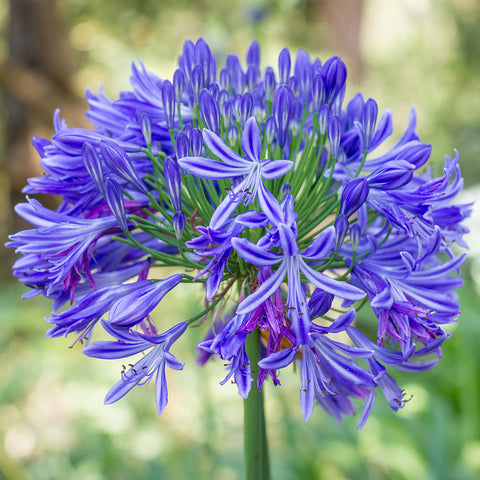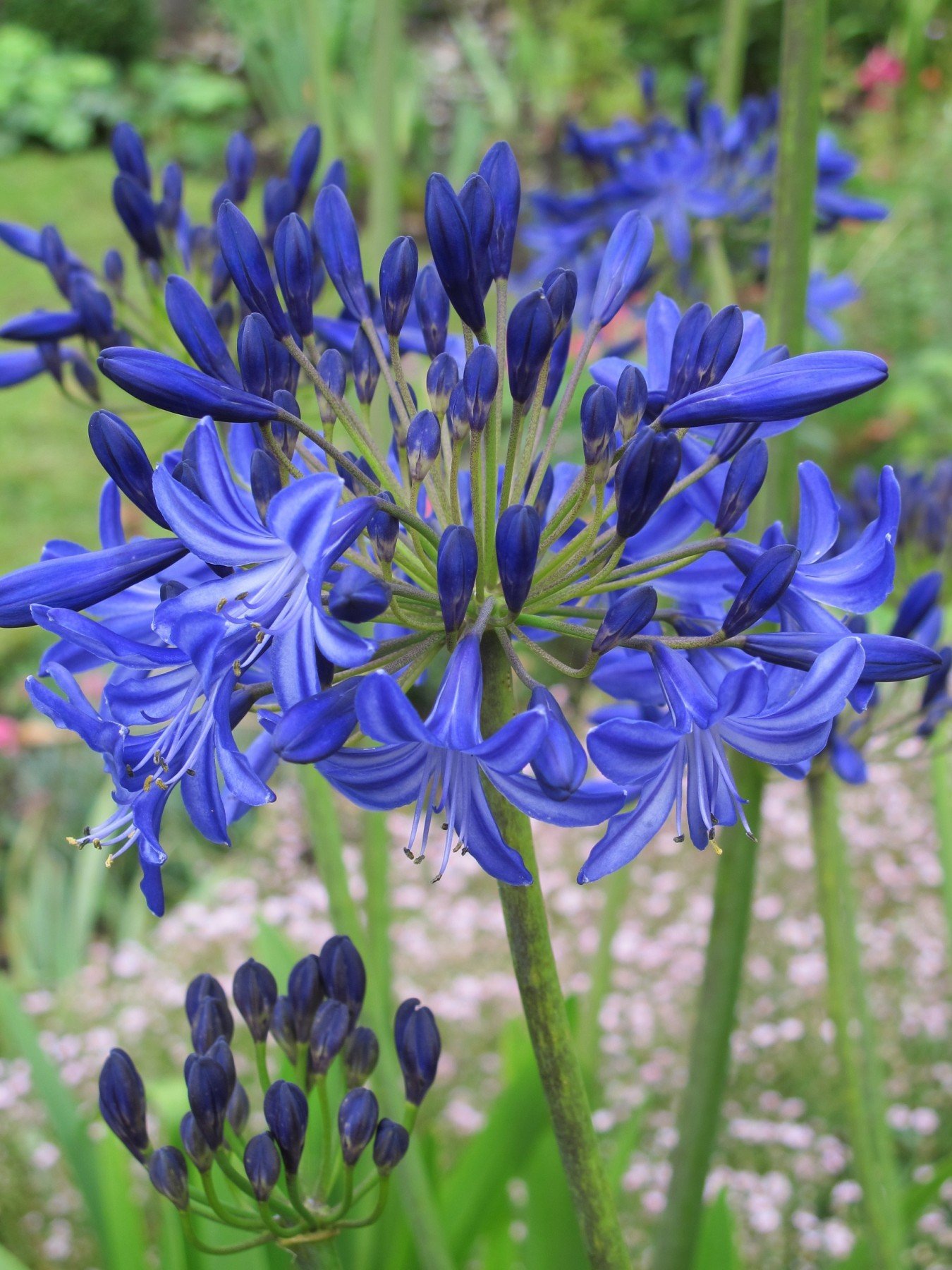Letting Loose the Secret to Successful Agapanthus Farming: Tips and Techniques for a Flourishing Garden
In the realm of gardening, cultivating agapanthus efficiently needs a tactical method that includes numerous elements of plant treatment. With careful attention to information, one can unlock the secrets to nurturing these magnificent blooms, resulting in a garden that prospers with appeal and vibrancy. By comprehending the nuances of agapanthus cultivation, one can create an environment where these plants flourish and grow abundantly. In the following discussion, we will discover essential pointers and tricks that will certainly lead you towards a prospering agapanthus yard, offering insights right into best practices, dirt conditions, watering techniques, and a lot more.
Growing Agapanthus: Finest Practices
When growing Agapanthus, appropriate dirt prep work is important for ensuring effective development and advancement of these gorgeous flowers. Agapanthus, commonly referred to as Lily of the Nile or African lily, flourishes in well-draining dirt with a slightly acidic to neutral pH degree - Agapanthus. Prior to growing, it is critical to amend hefty clay dirts with organic matter such as compost or peat moss to boost drainage and offer important nutrients for the plants
To grow Agapanthus, select an area that gets complete sunshine to partial shade, as this will advertise healthy growth and plentiful blooming. Dig a hole twice the size of the plant's root round and position the Agapanthus at the very same deepness it was previously expanding. Gently backfill the hole with dirt, weighing down strongly to get rid of any air pockets around the roots.
Water the newly grown Agapanthus thoroughly and continue to keep the dirt evenly wet, specifically throughout the plant's active growing period. Agapanthus. Using a balanced fertilizer once a month can additionally support the plant's growth and flowering. By following these finest practices for growing Agapanthus, you can create a sensational display screen of these exciting flowers in your garden
Suitable Dirt Issues for Agapanthus
For ideal growth and flowering success of Agapanthus plants, making sure the soil conditions are ideal is essential. Agapanthus prefers dirt that is rich in nutrients, so including a well balanced fertilizer during the expanding season can advertise healthy development and dynamic blossoms.

Watering and Feeding Tips
To make certain healthy and balanced growth and dynamic blooms, proper watering and feeding strategies are essential for successful Agapanthus farming. Agapanthus plants benefit from normal watering, specifically throughout the growing season.
When it comes to feeding Agapanthus, a well balanced fertilizer with equal parts nitrogen, phosphorus, and potassium can be applied in the springtime to promote healthy development and flowering. Slow-release fertilizers are perfect for supplying nutrients progressively over an extensive duration. Prevent over-fertilizing, as this can lead to excessive foliage development at the expense of flowers.
In addition, including natural issue like garden compost right into the soil can boost nutrient levels and improve dirt framework, helping in the general health and wellness of the Agapanthus plants. By following these watering and fertilizing pointers, gardeners can ensure their Agapanthus plants flourish and produce spectacular screens of flowers.
Trimming and Deadheading Methods
Proper trimming and deadheading strategies play a critical duty in keeping the health and looks of Agapanthus plants, complementing the crucial methods of watering and feeding for successful growing. Pruning Agapanthus includes eliminating spent flower heads, dead or yellowing leaves, and total shaping of the plant to promote better growth. Deadheading, the procedure of getting rid of faded blossoms, not just enhances the plant's appearance however also motivates further flowering.
When deadheading Agapanthus, it is suggested to trim off the blossom stem at the base using sharp, clean shears. This procedure reroutes the plant's power from seed manufacturing back into root and foliage development, advertising a much healthier and more durable plant. Normal deadheading can prolong the blooming duration of Agapanthus and protect against self-seeding, which can lead to overcrowding.
In terms of pruning, Agapanthus typically take advantage of a light trim after blossoming to clean the plant and urge fresh growth. Cutting down the invested blossom stems and eliminating any dead or damaged foliage assists preserve the plant's vigor and overall appearance. However, it is vital to prevent reducing right into the crown of the plant, as this can compromise its health and wellness.

Protecting Agapanthus From Pests and Diseases
Carrying out effective bug and disease monitoring techniques is critical to securing the health and wellness and vigor of Agapanthus plants in farming. One common parasite that affects Agapanthus is the Agapanthus borer, a caterpillar that passages right into the plant, triggering damage to the leaves and flowers.
Along with insects, Agapanthus are at risk to diseases such as origin rot and fungal leaf areas. These concerns can frequently be stopped by Look At This ensuring appropriate drain and staying clear of overwatering. Affected components of the plant need to be promptly eliminated to stop more spread if indicators of condition show up. Fungicides might also be utilized as a therapy step, go to this site following the producer's directions very carefully. By staying attentive and addressing parasite and disease issues immediately, garden enthusiasts can aid their Agapanthus flourish and thrive.

Final Thought
Finally, successful cultivation of agapanthus needs correct planting methods, ideal dirt problems, sufficient watering and feeding, normal pruning and deadheading, and defense from pests and diseases. By complying with these methods and tips, gardeners can ensure a flourishing garden full of beautiful agapanthus flowers. Agapanthus. Remember to preserve regular treatment and attention to information to promote the wellness and long life of these stunning plants
When planting Agapanthus, appropriate dirt prep work is essential for making certain effective growth and advancement of these lovely blossoms.Water the newly grown Agapanthus extensively and proceed to maintain the news dirt evenly moist, especially during the plant's active growing period.For optimum development and growing success of Agapanthus plants, guaranteeing the soil conditions are ideal is essential. When transplanting or planting Agapanthus, guarantee the soil is well-prepared to supply the required structure for the plants to develop themselves efficiently. One common pest that affects Agapanthus is the Agapanthus borer, a caterpillar that passages right into the plant, causing damages to the fallen leaves and flowers.